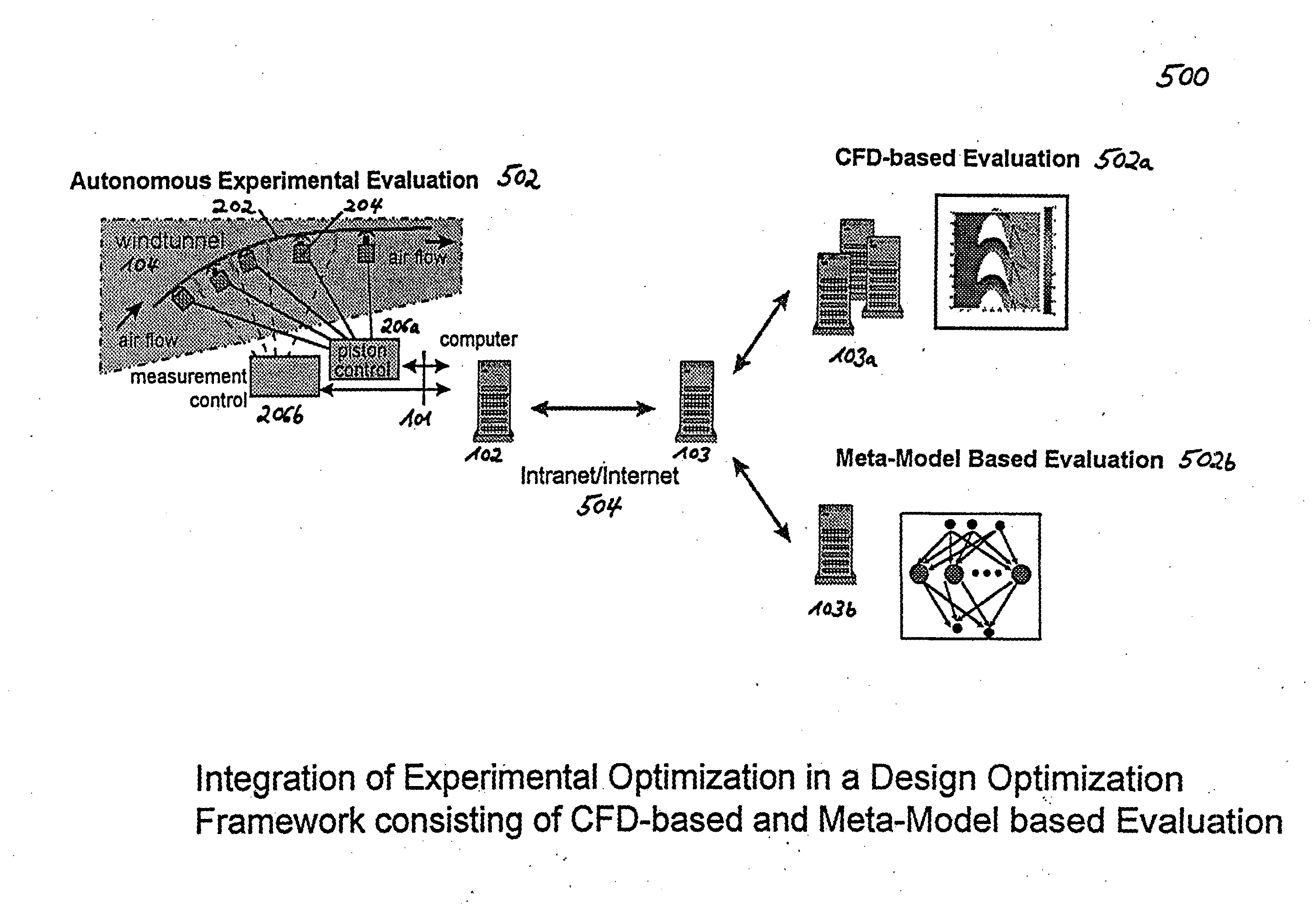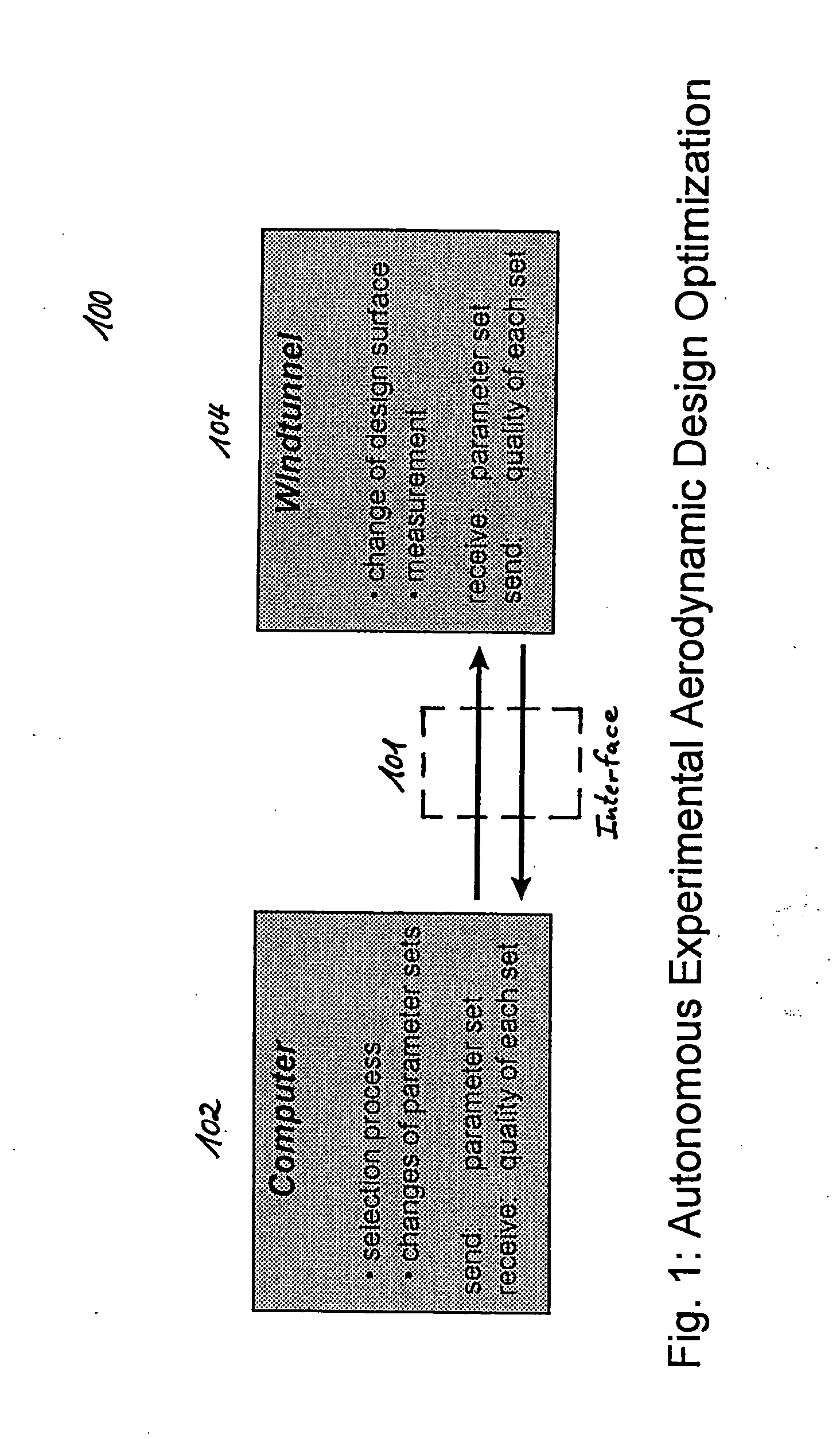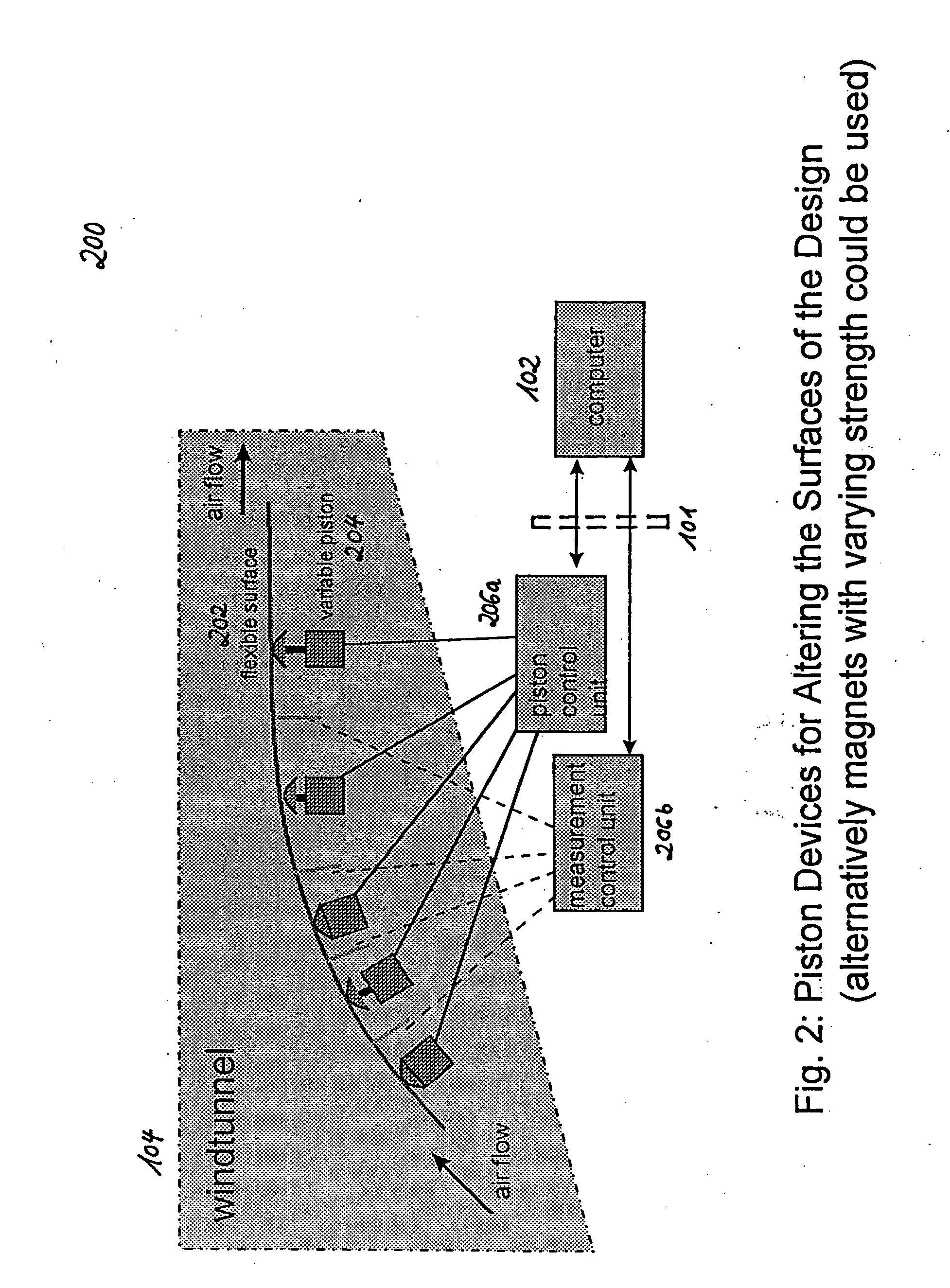Autonomous experimental design optimization
a design optimization and experimental technology, applied in the field of aerodynamic and hydrodynamic design optimization, can solve the problems of increasing the difficulty of solving problems, increasing the cost of simulation, and needing a relatively large number of evaluations, so as to speed up the optimization process
- Summary
- Abstract
- Description
- Claims
- Application Information
AI Technical Summary
Benefits of technology
Problems solved by technology
Method used
Image
Examples
Embodiment Construction
[0028]In the following description, embodiments of the present invention as depicted in FIGS. 1 to 6 shall be explained in detail. As an overview, the following is a brief description of the elements in the diagrams, charts, and illustrations of the figures.
[0029]System 100 embodies the principle of the autonomous experimental aerodynamic design optimization technique according to the one embodiment of the present invention. Interface 101 is the interface between the computing device 102 and the wind tunnel 104 in one embodiment of the present invention. Computing device 102 is a client PC needed for the selection process according to the evolution strategy and the calculation of optimized parameter sets according one optimization algorithm embodiment of the present invention. Server 103 is a first application server connected to the client PC 102 via the Internet 504 or any corporate network (Intranet), which hosts the optimization algorithm according to one embodiment of the prese...
PUM
 Login to View More
Login to View More Abstract
Description
Claims
Application Information
 Login to View More
Login to View More - R&D
- Intellectual Property
- Life Sciences
- Materials
- Tech Scout
- Unparalleled Data Quality
- Higher Quality Content
- 60% Fewer Hallucinations
Browse by: Latest US Patents, China's latest patents, Technical Efficacy Thesaurus, Application Domain, Technology Topic, Popular Technical Reports.
© 2025 PatSnap. All rights reserved.Legal|Privacy policy|Modern Slavery Act Transparency Statement|Sitemap|About US| Contact US: help@patsnap.com



